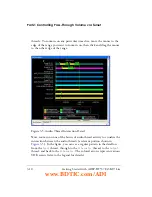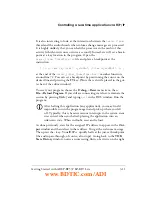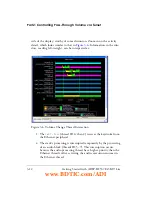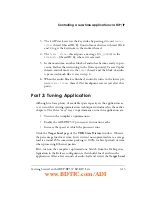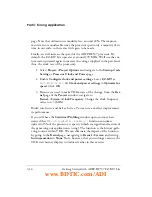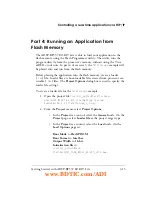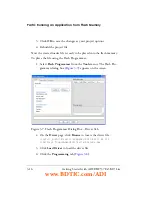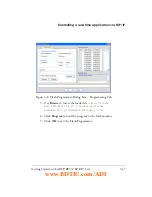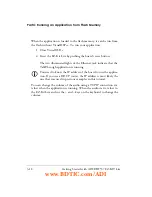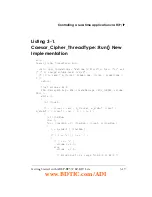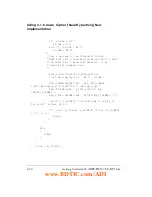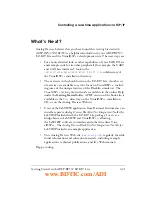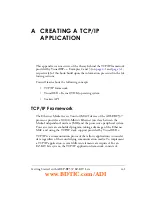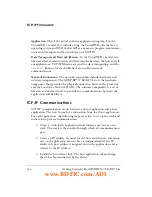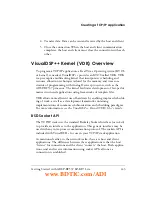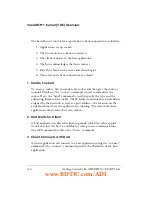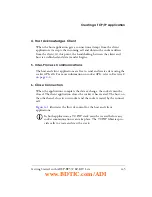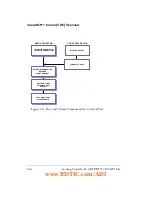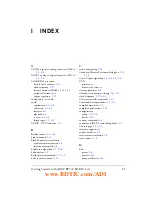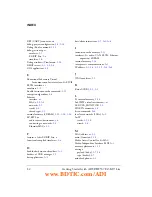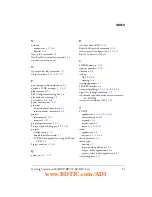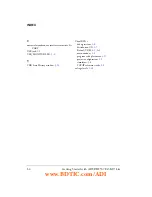
TCP/IP Framework
A-2
Getting Started with ADSP-BF537 EZ-KIT Lite
Application
. This is the actual end-user application program. For the
Vi+ model, this includes using the Vi+ Kernel as an
operating system and BSD Socket API as a means to program communica-
tions with Transport and Network layers of TCP/IP.
Data Transport and Network libraries
. In the Vi+ model, two
libraries allow communication and data transfer between the host and cli-
ent applications. TCP/IP libraries are used for data transporting, and the
LwipBF537
libraries (or stack libraries) are used for network
communications.
Network Connection
. The network connection includes hardware and
software components. The ADSP-BF537 EZ-KIT Lite is the hardware
component that provides the physical connection between the processor
and the Local Area Network (LAN). The software component is a set of
libraries and device drivers to provide the communications between the
application and hardware.
TCP/IP Communications
TCP/IP communication occurs between a client application and a host
application. The host listens for a connection from the client application.
For each application, the following steps are taken to set up the stack and
initiate inter-process communications.
1. Create a stack. Each application must initiate and start its own
stack. The stack is the conduit through which all communications
pass.
2. Create an IP address. In order for the host and client to communi-
cate, each application must to have a unique identifier (an IP
address). A port address is assigned also to the application and is
relative to the IP address.
3. Establish a host–client link. The host application acknowledges
that it has been contacted by the client.
www.BDTIC.com/ADI

